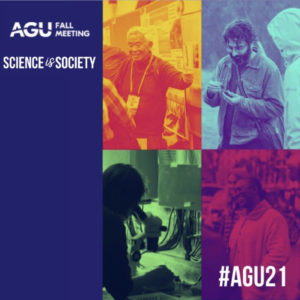 This year the AGU Fall Meeting, with the theme “Science is Society,” hosts sessions in New Orleans and online. Register for the meeting here.
This year the AGU Fall Meeting, with the theme “Science is Society,” hosts sessions in New Orleans and online. Register for the meeting here.
Here are some sessions of interest (all times in PST unless otherwise noted):
December 7
9:15am PT (online)
Town Hall on the role of user facilities in accelerating research and tips for submitting successful proposals: Collaborate With a U.S. DOE User Facility: Learn About Available Expertise and Resources, Open-Call Opportunities, and Important Tips for Submitting Successful Proposals
December 9
4:15pm PT (online)
Town Hall on how the Facilities Integrating Collaborations for User Science (FICUS) program allows scientists access to multiple user facilities through a single research proposal: Maximize Your Research by Harnessing Multiple Scientific User Facilities in One Proposal via FICUS
December 13
8:12 am Convention Center eLightning Theater IV
Kuno Kasak, University of Tartu (lightning talk): “Wetland Restoration on Intensive Agricultural Lands Changes Nitrogen Cycling Microbial Communities and Reduces N2O Production Potential in Sacramento-San Joaquin Delta, California”
December 14
8:05am Convention Center, Rm 231-232
Josue Rodriguez-Ramos, Colorado State University (short talk): “Microscopic time travelers: A finely tuned, time-resolved analysis of viral and microbial communities in the Erpe river”
8:30am Convention Center, Rm 231-232
Kelly Wrighton, Colorado State University: “Putting microorganisms on the map: continental-scale context for thousands of newly sampled microbial genomes from North American watersheds (Invited)”
4pm CST Convention Center, Poster Hall D-F poster B25J-1604
Eoin Brodie, Berkeley Lab: “Uncovering microbial metabolic trajectories during the snowmelt period in mountainous watersheds”
December 15
12:51pm Joan Damerow, Berkeley Lab (short talk): “How do we make interdisciplinary sample data more FAIR?”
December 16
7:55am, Convention Center Rm 228-230
Holly Andrews, University of Arizona (lightning talk): “Microbial controls of nitrous oxide pulses in rewetted forest soils: An integrated -omic and isotopic approach”
12:39pm Convention Center eLightning Theater IV
Linnea Honeker, University of Arizona (lightning talk): “Effect of drought on soil microbial metabolisms driving carbon allocation and volatile organic compound cycling in the tropical rainforest at Biosphere 2”
2pm Convention Center, Poster Hall D-F poster B45F-1604
Joseph Roscioli, Aerodyne Research Inc.: “Subsurface measurements of nitrogen dynamics in agricultural soil”
4pm Convention Center, Poster Hall D-F poster B45O-1813
Maggie Bowman, PNNL: “EMSL’s 1000 Soils Project: core collection strategy and data types available”
December 17
6:40am Convention Center Rm 267-268
Laura Meredith, University of Arizona (lightning talk): “Subsurface stable isotope approaches for resolving nitrogen transformations in the critical zone”
8:03am Convention Center eLightning Theater III
Pamela Weisenhorn, KBase at Argonne (lightning talk): “Applying Data Standards and Reproducible Workflows To Advance Earth System Science”
11:18am Convention Center, Rm 238-239
Kaela Amundson, Colorado State University (short talk): “Predators of the Deep: virus-host dynamics in the terrestrial subsurface”
2pm Convention Center, Poster Hall D-F poster B55N-1361
Joseph Roscioli, Aerodyne Research Inc.: “Connecting above-ground greenhouse gas fluxes with subsurface nutrient cycling at an intensively-managed cattle grazing pasture”
2pm Online Only
Malak Tfaily, University of Arizona: “Spatial metabolic profiling in roots reveals plant specific responses to drought at the Biosphere 2 tropical rainforest”